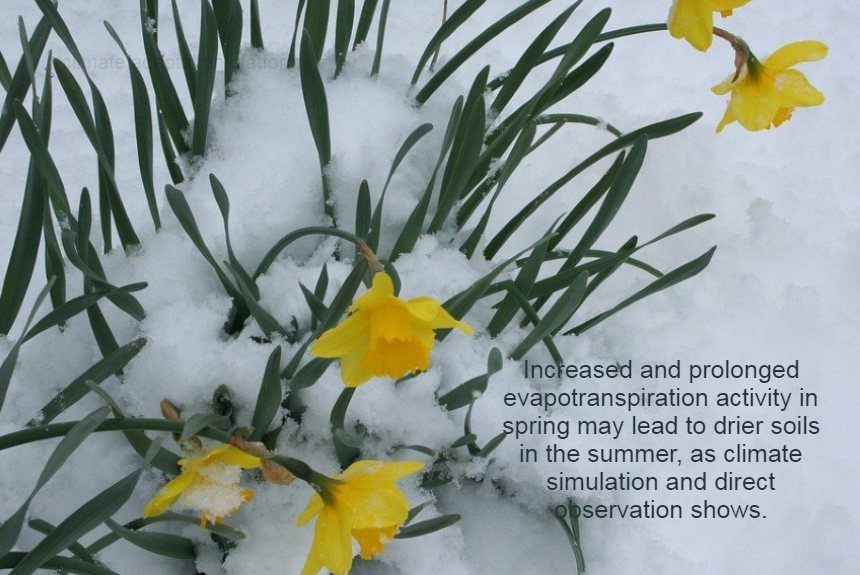A study published in January 2020 says that due to the changing climate, phenology can shift. Phenology is the schedule or lifecycle of plants and living things, such as when they first bud, leaf, flower, or fruit.
Using satellite data, researchers have observed an early spring greening in the Northern Hemisphere. The emergence of early spring can increase carbon uptake, which leads to more productivity in plants. Hence, the increased foliage cover in the Northern Hemisphere that researchers documented between 1982 and 2011.
Early spring greening can also increase evapotranspiration, when plants transport water from the soil to the atmosphere. As climate simulation and direct observation show, increased and prolonged evapotranspiration activity in spring may lead to drier soils in the summer.
Drier soils also reduce the cooling effect of evaporation, which can usher in more intense heat waves in the summer. Overall, this reduces ecosystem productivity and restrains vegetation, especially for water-sensitive plants.
Researchers have also observed a teleconnection phenomenon. For example, the moisture sucked into the vegetation in Europe in spring is transported to Siberia in the form of rain the following summer, which can offset soil drying from early greening.
This finding is important as it can accurately predict soil moisture and climate conditions in a local region’s summer based on direct links between large-scale atmospheric patterns and soil moisture in the region, as observed by the study’s researchers.
Soil moisture levels in deeply rooted plants were not included in the study as they are not directly measured at large-scale levels, and estimates of soil moisture content between direct observations and global climate models (GCM) differ. Also, intensely farmed and irrigated areas cannot be associated with large-scale atmospheric conditions and resulting soil moisture.
Therefore, human intervention and land use practices are significant factors in the greening and plant life cycles and should be included in future global climate models.
In China, however, large-scale reforestation efforts and forest management practices are not treated separately from areas with natural greening, as these areas are expected to experience the same transpiration and large-scale precipitation patterns as those included in the study.
The critical thing to remember here is that climate change can shift the lifecycle of plants and all living organisms. Changes like early greening can lead to soil dryness, resulting in adverse climate conditions like heatwaves and droughts and reduced vegetation activity, hindering food production in the affected areas.
Source:
X.Lian, S.Piao, L.Z. X.Li, Y.Li, C.Huntingford, P.Ciais, A.Cescatti, I.A. Janssens, J.Peñuelas, W.Buermann, A.Chen, X.Li, R.B. Myneni, X.Wang, Y.Wang, Y.Yang, Z.Zeng, Y.Zhang, T.R. McVicar, Summer soil drying exacerbated by earlier spring greening of northern vegetation. Sci. Adv.6, eaax0255 (2020). Retrieved from https://advances.sciencemag.org/content/6/1/eaax0255



Leave a Reply